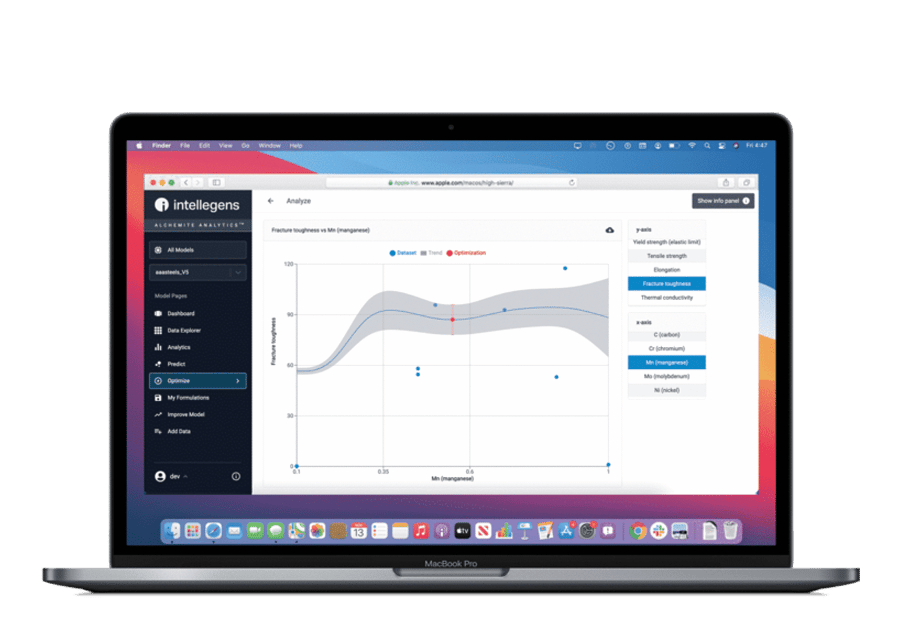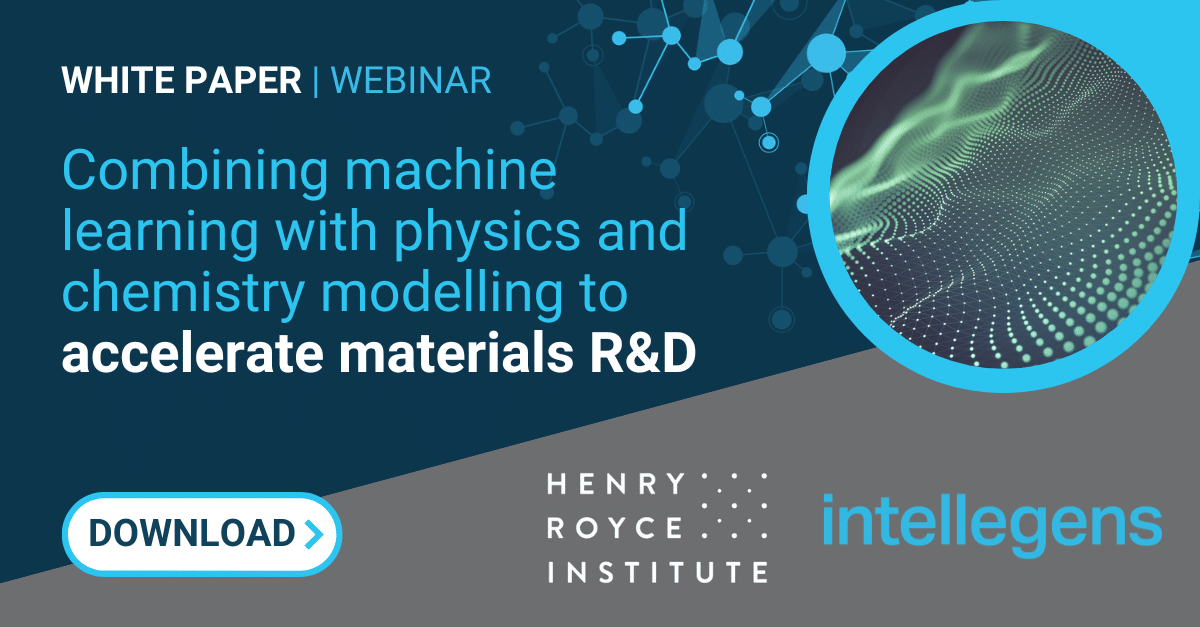Complex problems. Real-world data. Finance, scientific discovery, retail, supply chain management, manufacturing processes, healthcare, infrastructure planning – these are just some of the areas where you may need to predict future performance or to work out how to optimise that performance against multiple targets. Almost always, you are dependent on real-world data that is sparse or noisy.
That’s where the unique Alchemite™ technology comes in. It can rapidly generate predictive models from sparse, noisy, high-dimensional datasets. You can instantly apply these models for prediction and optimisation, gaining vital insight and aiding decision-making. And Alchemite™ helps you to understand the uncertainty in these predictions so you can assess and manage risk and pick the solution to your problem that is most likely to succeed.
Combining ML with other modelling approaches
In a project with the Henry Royce Institute (the UK National Materials Institute), we studied how Alchemite™ machine learning could be combined with other physics and chemistry modelling methods for more effective results. Such integration is possible with any other type of modelling using the Ichnite™ technology from Intellegens.
What’s your application?
Alchemite™ works with any numerical or categorical dataset. Maybe you are trying to eliminate fraud or guide investments based on data about financial transactions? Or to work out what equipment to install or fix next using sensor data from in-service devices? Perhaps you have patient data that could inform vital healthcare decisions? Or customer data that could guide your retail strategy? Whatever your application, get in touch and we’ll be happy to show you Alchemite™ and discuss how it might meet your needs.
Software integration partnerships
The Alchemite™ algorithms can also be embedded in third-party software, providing powerful prediction or optimisation capabilities. If you have an application with users who need to get more value from sparse or noisy data, get in touch.
Intellegens for predictive modelling
Use Alchemite™ to:
- Gap-fill and validate sparse, noisy data
- Auto-generate and refine models that identify key relationships
- Quantify uncertainty to support rational decisions and understand risk
- Predict likely outcomes, even with limited training data
- Design inputs to optimise multiple target outputs
Use Ichnite™ to integrate Alchemite™ with other modelling methods and diverse data types.



